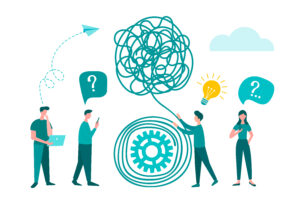General Information
Healthcare
Workers in these occupations help clients maintain and improve wellbeing. Overall employment in healthcare occupations is projected to grow much faster than the average for all occupations from 2022 to 2032. About 1.8 million openings are projected each year, on average, in these occupations due to employment growth and the need to replace workers who leave the occupations permanently. https://www.bls.gov/ooh/healthcare/home.htm#
Medical care careers encompass a diverse range of professions dedicated to the health and well-being of individuals and communities. These career paths involve various aspects of healthcare, from diagnosing and treating medical conditions to providing essential support and assistance in medical facilities. Careers in the medical care sector span across numerous specialties and disciplines. https://osha.europa.eu/en/themes/health-and-social-care-sector-osh
Professions:
- Physician
- Nurse
- Nursing Assistant
- Personal care attendant
- Healthcare assistant
- Doctor
- Pharmacist
- Allied Health Professional
- Healthcare Administrator
- Caregiver
- Administrative staff
- Medical Researcher
- Paramedic/EMT
- Midwife (pediatrician)
- Dentist
- Psychologist/Psychiatrist/Therapist
- Radiologist
- Medical Technician
- Home Health Aide
- Medical Social Worker
- Nutritionist/Dietitian
- Phlebotomist

Entry requirements
- None
- Previous experience in the field (e.g. internship)
- Related diploma or VET course, licenses or certifications
- Be familiar with technical machinery
Hard skills
- Knowledge of technical agricultural equipment
- Physical fitness

Entry requirements

- Formal education – Elementary and Secondary School, 12y. Upper Secondary School – 3y. Vocational – 1,5 y. University 3-5y.
- Language knowledge – being able to understand and communicate in the local language, understand what the patient/care recipient wants and needs.
- Elementary School and Secondary School – required for all healthcare professionals. Often enough for unlicensed medical professionals such as: Personal Care Attendant, Caregiver, or assistant.
- Upper Secondary School – required for some health staff, such as: Health Care Assistant, Administrative staff
- Vocational School – 1-2y, nurse aid, administrative staff.
- University/Higher Education, 3/5 y, often required for licensed staff, such as: doctor, nurse, nurse aid, physician.
- Additional Courses in a specific segment of profession, such as: Record-keeping/admin, Mobility/rehabilitation, Psychological/Social Support, Body mechanics/Nutrition, Anatomy/physiology. Cognitive impairments/mental health, Infection control
- On the job training or previous experience.
Hard skills

- Activities of daily living – Dressing, repositioning, transfering, feeding, dressing patients.
- Personal Care/Hygiene – Bathing, bedmaking, toileting, oral hygiene, nail care, grooming.
- Physical Support – mobility, prepare patients for care and exams.
- Mobility/rehabilitation – move inactive patients.
- Medical Tests/Health-Checks – taking blood-samples, blood pressure, temperature, pulse, respiration, weight, obtaining vital signs, giving injections, collecting samples for lab tests, monitoring patients.
- Organizing and using medical equipment
- Stocking supplies
- Record-keeping/admin – answering patient calls, keeping documentation, observing, reporting patient status, answering phones, submitting prescriptions to the pharmacy, gathering/recording patient information, vital signs and symptoms.
- Working on your feet – Not a lot of “down-time”. Care professions are often physically demanding and you should like to stand, walk and move around if you are to enjoy the profession.
- Promote health and wellness – Enable people to improve, maintain, or recover health.
- Anatomy/physiology – bones, muscles, ligaments, body tissues, organs, infection control.
Soft skills

- Support – give information to patients and family, communicate options of support if needed, talking/spending time with patients, answering questions, taking time to comfort and give.
- Help and assist people – Support services to patients, their families and other caregivers.
- Emotional Support – assist the individual, sick or well in the performance of activities contributing to health.
- Collaboration/Teamwork – support nurses, doctors and other health sector staff
- Delegated responsibilities – being able to “take orders” from others.
- Flexibility/Time management – be on time and prioritize between all tasks.
- Responsibility – working with people’s lives and health.
- Empathy/Compassion – caring, understanding, listening, emotional management.
- Interpersonal Communication – able to communicate with team, patient, family, other organizations.
- Planning/Prioritising – structure, stress-management, being on time, prioritizing what needs to be done.
- Value-based thinking – org values/sector values.
- Patience/Humble – with patients, colleagues and family in need.
Transferable skills

- Stress Resistance – be able to cope with things not going well and not be stressed by unforeseen events.
- Accurate/Efficient – think fast, prioritize tasks, calendars, administration, phone calls, make accurate decisions.
- Empathy/Compassion – caring, understanding, listening, emotional management.
- Interpersonal Communication
- Planning/Prioritising – structure, stress-management, being on time, prioritizing what needs to be done.
- Patience/Humble
- Flexibility
- Emotional/Social Support
- Stocking supplies
- Record-keeping/admin
- Working on your feet
- Collaboration/Teamwork
- Flexibility/Time management – be on time and prioritize between all tasks.
- Responsibility
Work sector/industry statistics (with reference link)
The healthcare field is in a strong position for overall growth. The Bureau of Labor Statistics (BLS) reports that healthcare occupations are projected to add more jobs than any other occupational group from 2019–2029.
To put the size of the industry into some perspective, in 2011, the World Health Organisation estimated that globally there were:
- 2 million physicians
- 4 million nurses and midwives
- 9 million dentists and other dentistry personnel
- 6 million pharmacists and other pharmaceutical personnel
- Over 1.3 million community health workers
This means that by 2017, around 33% to 49% of the world’s population was covered by essential health services. However, studies suggest that there could be a worldwide net shortage of around 15 million healthcare workers by 2030.
https://human-resources-health.biomedcentral.com/articles/10.1186/s12960-017-0187-2
https://www.who.int/gho/publications/world_health_statistics/2011/en/

